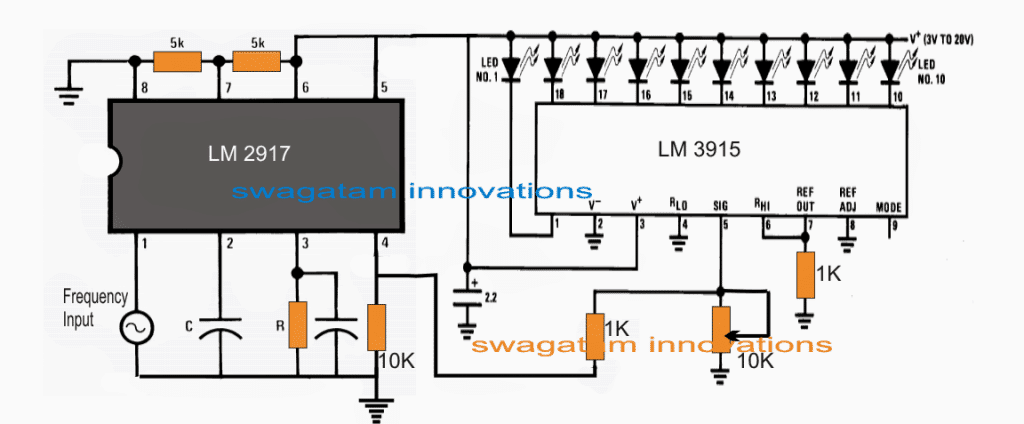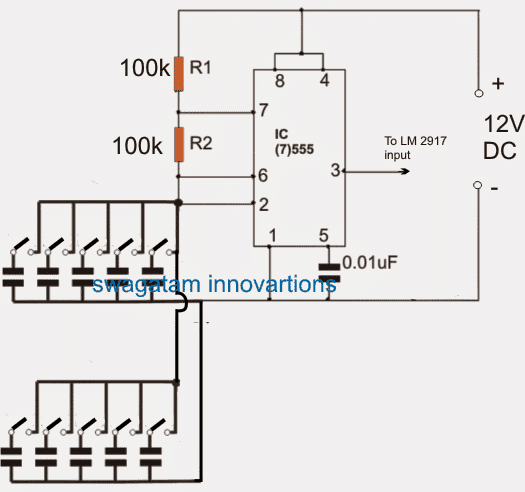In this post I will explain a circuit idea which can be used for identifying the switching pattern of set of valves from a remote location, using just two wire from the valve sets to the indicator circuit at the distant location. The idea was requested by Mr. Andreas.
Technical Specifications
Here is another circuit that could be need some solution. There are 12 valves that they serve filling actions. So what i need to do every time any of valve/s are getting ON,will activate a light indicator/s plus a buzzer to announce it from a distance of around 60-70m long.
In the analog world we need 12 light indicators and a buzzer plus a cable wire of at least 13 wires(12 for valves plus 1 for common).Since there is not any 13 wire cable, we must choose the next available which is 19x1mm and cost around $55.
Is there any other digital circuit that will do the same thing but with 2 wire only??(Buzzer will sound every time a new valve is ON also a muting switch)
The Design
The proposed 12nos valve activation indicator circuit can be implemented using only two wires with the help of the following circuit:

Referring to the above circuit schematic, we can see two IC stages, the left IC LM2917 forms a precise frequency to voltage converter, while the IC LM3915 is rigged as a LED dot mode voltage indicator stage.
The entire circuit is supposed to convert a varying frequency into a correspondingly shifting LED across the shown 10 LED outputs of the IC LM3915.
So basically any fluctuating frequency fed across pin#1 of IC LM2917 is appropriately converted into rising or declining voltage levels at its pin#4, which is fed at the sensing input pin#5 of the LM3915. This signal is instantly converted into an advancing LED "dot" across the given LED array from pin#1 to pin#10 of the IC LM3915.
The illuminated position of any of the LED across the given 10 outputs indicates the frequency level that may be available at pin#1 of the left IC.
The idea here is to set different frequency levels for the 12 valves through a IC 555 such that toggling of the particular valve produces a unique frequency, which may be further fed to the input of the above explained circuit.
Depending upon the frequency level, the corresponding LED may be expected to light up, thereby indicating which valve was activated at the remote location.
As we can see, a variety of signals (10 or 12) can be transmitted from the valve mechanism to the remote LED indicator location using just two wires, as requested in the above section of the article.
12 Channel Transmitter Circuit
The following figure shows the transmitter circuit which is supposed to be integrated with the 12 valves, although only 10 inputs are shown in the diagram, which may be appropriately upgraded to 12 or more by adding more capacitors to the IC 555 circuit, and also by cascading another LM3915 IC to the existing design for adding more LEDs in the sequence.

In the above diagram we are able to see, an IC 555 wired as an astable multivibrator circuit, wherein 10 individual capacitors with incrementing values are configured across the pin6/2 and ground of the IC. These capacitors are toggled by the 10 discrete relay contacts which in turn force the IC to generate the corresponding frequency at the calculated level, at its pin#3.
The relay coils attached with these contacts are rigged with the valve outputs such that the relevant relay coil gets energized as as soon as the matching valve is activated.
The above action causes the IC to generate a corresponding level of frequency which is transmitted through a pair of wires to the indicator circuit's input.
As explained in the initial section of the article, the IC LM2917 reacts to this input, converting it into a corresponding magnitude of voltage level for the IC LM3915.
LM3915 accepts the voltage level and illuminates the particular LED in response to the fed frequency level from the IC 555 circuit.
Post your comments here and get guaranteed replies. Comments must be related to the above article.